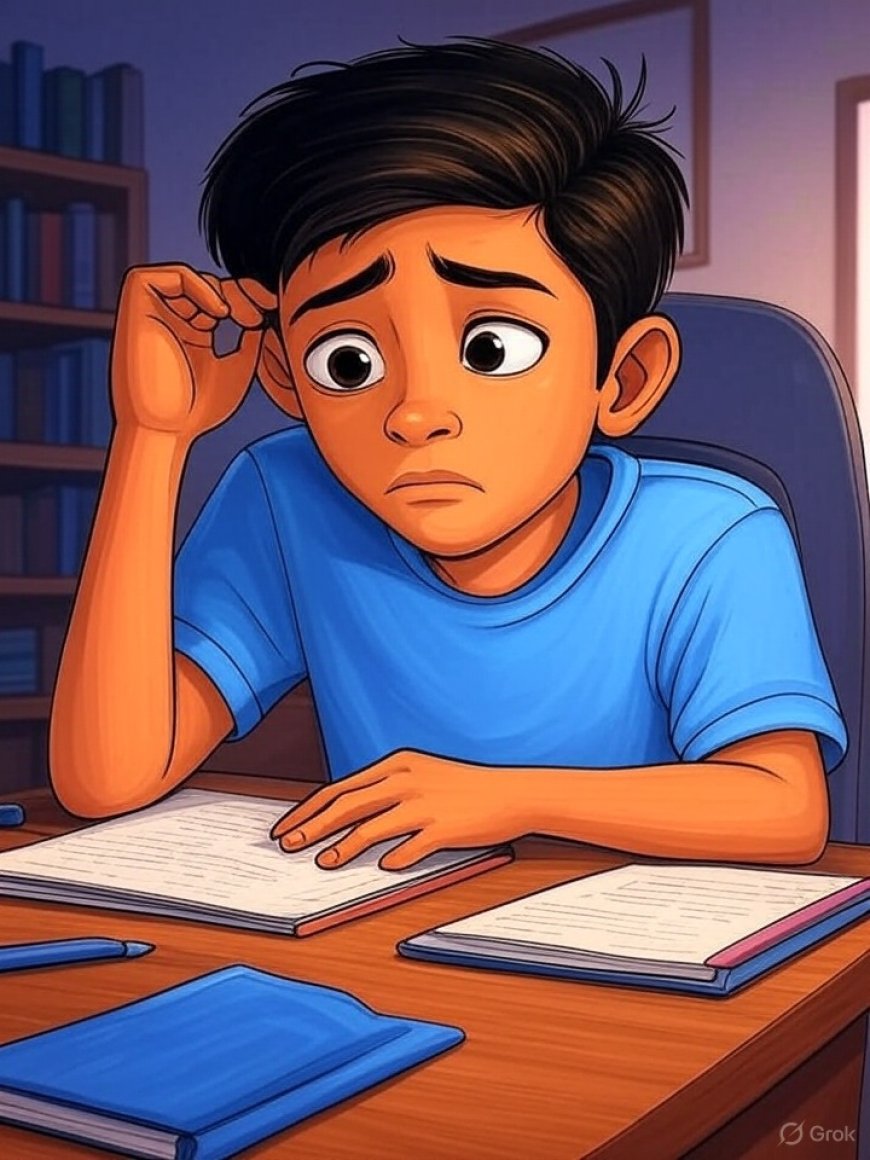Breaking Point Before Graduation: How Academic Pressure Is Fueling Early Burnout in Teens
Early burnout in teens is a growing mental health crisis driven by academic pressure and perfectionism. Discover its signs, causes, and solutions.

Introduction
In an era where academic excellence is prized above all else, a worrying trend is emerging—early burnout in teenagers. This once adult-centric phenomenon is now taking root in middle and high school corridors, raising red flags for mental health professionals, educators, and parents alike. As schools push harder and students stretch thinner, the price of achievement is increasingly being paid with mental well-being.
Burnout is no longer just a workplace issue; it has seeped into classrooms, extracurriculars, and digital learning platforms. And unlike short-term stress, burnout is chronic, insidious, and potentially long-lasting. It's time we treat it as a public health issue.
What Is Teen Burnout?
Burnout is defined by three main components: emotional exhaustion, depersonalization, and a reduced sense of accomplishment. In teens, these symptoms may present as irritability, withdrawal from activities, chronic fatigue, and a lack of motivation—even when performance is not slipping.
According to a Harvard Medical School report, students are increasingly exhibiting adult-like symptoms of burnout, which is both a psychological and physiological stress response. Alarmingly, it starts much earlier than most parents and teachers expect.
The Competitive Academic System: A Pressure Cooker
Modern schooling systems have become hyper-competitive, especially in countries where academic success is tied to economic mobility. From standardized testing to college entrance exams, the message is clear: failure is not an option.
Students are often expected to juggle:
-
7+ hours of school
-
Coaching classes or tuition
-
Homework and projects
-
Sports, clubs, or volunteering
-
College preparation courses or internships
This leaves little room for rest or recreation, let alone mental downtime.
A recent American Psychological Association (APA) study revealed that teenagers experience stress levels comparable to adults, particularly during exam seasons. The long-term effects? Increased risk of depression, anxiety, and even chronic physical health conditions.
Red Flags: How to Spot Burnout Early in Teens
Recognizing the early signs of burnout in teenagers is critical. These may include:
-
Chronic fatigue, even after adequate sleep
-
Loss of interest in activities they once enjoyed
-
Withdrawal from social interactions
-
Sudden drop in academic performance
-
Frequent complaints of headaches or stomachaches
-
Increased irritability or mood swings
Parents and educators often confuse burnout with laziness or rebellion. But identifying the difference is key to timely intervention.
The Role of Social Media and Perfectionism
Teenagers today are bombarded with curated glimpses of “perfect” lives on platforms like Instagram, TikTok, and YouTube. Academic achievements, trophies, and success stories are widely shared, feeding an unhealthy comparison cycle.
This culture promotes perfectionism, a known contributor to mental health disorders. According to the National Library of Medicine, perfectionistic teens are more prone to depression and anxiety, especially when they tie their self-worth to performance metrics.
Mental Health: A Missing Subject in Education
Despite the mounting evidence, mental health education remains largely absent from school curricula. Institutions are slow to integrate programs that teach emotional intelligence, stress management, and mindfulness, all of which can significantly reduce the risk of burnout.
Some progressive schools have adopted the Social and Emotional Learning (SEL) framework, which fosters skills such as empathy, self-regulation, and decision-making. However, implementation remains inconsistent and often underfunded.
Real Solutions: Preventing Teen Burnout
Addressing early burnout requires a multi-pronged approach involving parents, schools, and policymakers. Here’s what can help:
1. Redefine Success
Shift focus from grades to personal growth and resilience. Encourage activities that cultivate curiosity rather than just competition.
2. Promote Open Conversations
Let teens speak openly about their struggles without fear of judgment. Mental health check-ins should be as routine as parent-teacher meetings.
3. Implement Structured Downtime
Daily schedules should include unstructured time for teens to unwind, play, or simply be idle. This is not wasted time—it’s recovery.
4. Limit Screen Time and Tech Stress
Digital detoxes, particularly during exam periods, can drastically reduce anxiety levels. Use tech responsibly by engaging with evidence-based digital wellness apps, not just productivity trackers.
5. Train Educators
Teachers should be trained to recognize signs of burnout and provide referrals or adjustments when necessary. Schools can collaborate with mental health organizations like Child Mind Institute for workshops and training modules.
The Indian Context: A High-Stakes Culture
In countries like India, the pressure to perform well in entrance exams such as NEET and JEE has created an entire shadow industry of coaching centers. The Lancet Regional Health recently highlighted the impact of such intense preparation, correlating it with rising youth suicides.
Mental health professionals have warned that without institutional reform, we risk raising a generation that's academically competent but emotionally hollow.
Conclusion
Burnout in teens is not a phase—it’s a mental health crisis that demands urgent attention. Ignoring it may yield top scores, but at the expense of a young person’s long-term happiness, self-esteem, and mental stability.
Creating a sustainable academic environment is possible, but it begins with acknowledging the problem and redefining what success truly means. Let’s shift the narrative—from pressure to passion, from stress to strength.
What's Your Reaction?
 Like
0
Like
0
 Dislike
0
Dislike
0
 Love
0
Love
0
 Funny
0
Funny
0
 Angry
0
Angry
0
 Sad
0
Sad
0
 Wow
0
Wow
0



















































